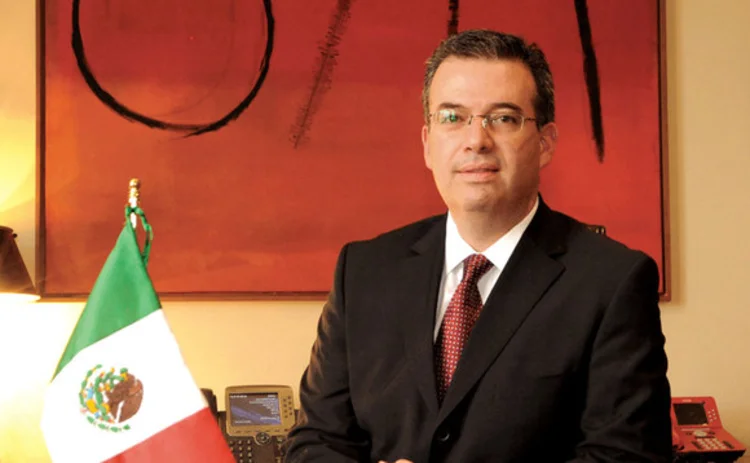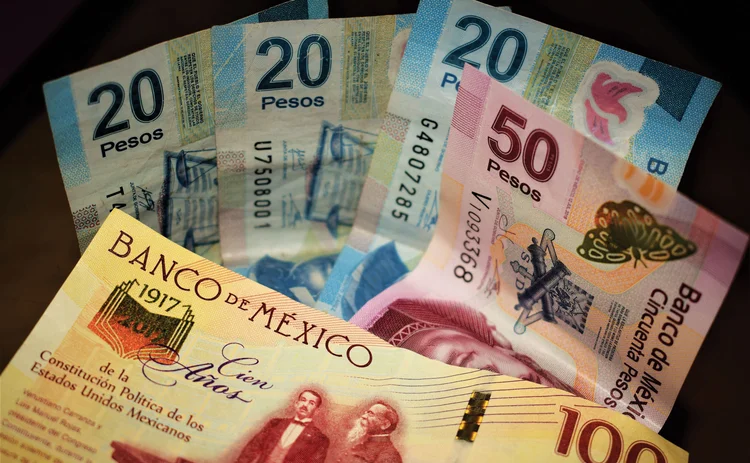
Currency manager: Bank of Mexico
Central bank invested in new printing plant to address capacity and concentration risks

Around the world, a shift in consumer spending habits has had many central banks drafting policies to assist their economies’ transition to be less reliant on cash infrastructure. New, innovative means of payment have quickly come to dominate some markets, with members of the public preferring to pay digitally. However, in a number of countries, cash usage remains not just a core but also a growing method of payment.
The Bank of Mexico has a mandate to print banknotes and order coins from the state mint – La Casa de Moneda de México. But it also has a responsibility to ensure an efficient money supply and guarantee the availability of cash wherever and whenever, in denominations required by the general public. In November 2018, the Bank of Mexico opened a second banknote printing facility, almost 50 years after its first facility began operations. “The new factory will allow the Bank of Mexico to keep up with the increased demand for banknotes,” said governor Alejandro Díaz de León at the time.
The central bank uses a number of statistical analysis tools to forecast future demand for banknotes. Several aspects are considered, says Alejandro Alegre, chief cashier at the Bank of Mexico, including increases due to seasonal factors and the replacement of unfit banknotes. In Mexico, 70% of new banknotes are used to replace those currently unfit in circulation, as the average lifespan for a note in circulation is around three to four years.

The central bank also uses an ‘inventory policy’, which adjusts the stock of new and used fit banknotes to attain a pre-established target for contingencies, such as natural disasters. The inventory policy also helps to mitigate the impact of forecast errors, Alegre tells Central Banking.
The Bank of Mexico’s main banknote printing facility opened in the country’s capital, Mexico City, in 1969, and has gone from printing 201 million banknotes in 1970 to 1.45 billion in 2017. With the central bank forecasting that demand for banknotes was due to increase by around 10% annually at a time when the printing plant in Mexico City was reaching capacity, a decision was taken to build an additional facility in Guadalajara on the Pacific coast of Mexico.
“Business continuity was a major factor in our decision to place the printing plant outside the capital,” explains Alegre. “We wanted to avoid the impact of human and natural disasters.”
The location of the new plant is in an area that is quickly developing economically, and the central bank already has a strong presence in the city, having located an office there to run the country’s cash machine network. “The region also had the second-highest demand for banknotes,” adds Alegre.
Guadalajara also has strong road and aeronautical infrastructure, which will be important for the distribution of the banknotes produced there. Since August 2018, the central bank only uses CRJ700 aircraft, which replaced its Dash 8-202 planes, as the new aircraft has a larger range and load capacity.
New capabilities
Planning around the construction of the plant began in 2013, after a long consultation process on the design of both the factory floor and the vault. The central bank also hired a security consulting service to provide advice on the safety and security of the proposed designs.
In April 2015, the central bank hired an additional consultant to produce a study looking into the environmental impact the new plant would have on the surrounding area. The study was presented to the region’s Ecology, Agricultural and Forestry Development Directorate. The plans were approved and building commenced.
Business continuity was a major factor in our decision to place the printing plant outside the capital. We wanted to avoid the impact of human and natural disasters
Alejandro Alegre, Bank of Mexico
It was a quick construction project, and the plant was finished by the end of 2017, following which testing was conducted on the equipment, and staff began to relocate to the new premises. In total, the project cost 3.63 billion pesos ($191.8 million) – 1.14 billion pesos corresponding to the acquisition of the land, with 2.49 pesos billion for the building construction and equipment.
The Mexico City facility will continue for the time being to print the majority of Mexico’s banknotes, approximately 1 billion annually. The new plant will be responsible for printing around 500 million. “We have three production lines: two in Mexico City and one in Guadalajara,” says Alegre. “But we have room to establish two further production lines at the new plant should we need to.”

The new facility has also adapted to changes within the banknote industry. The central bank issued its first polymer banknote in 2002. Since the transition of the 20 peso note, the central bank has also launched both the 100 and 50 peso notes on polymer. The remaining three denominations (200, 500 and 1,000 pesos) remain on paper substrates.
All denominations will be able to be printed at the new facility in Guadalajara.
Improved risk management
The new building will also house a vault with the capacity to hold 5,500 cash containers, increasing the Bank of Mexico’s banknote storage capacity by 35%.
Governor Díaz de León has said 250 people will be employed to work at the new facility, which principally will be responsible for supplying banknotes to the western states of Aguascalientes, Baja California, Baja California Sur, Chihuahua, Durango, Jalisco, Michoacán, Nayarit, Sinaloa, Sonora and Zacatecas.
“Around 3,400 people work at the central bank, and we have managed to ensure we have a balance of new and experienced people working at the new plant,” Alegre tells Central Banking. “Some people from our original facility in Mexico City were able to move and provide support to the new employees.”
The Central Banking Awards were written by Christopher Jeffery, Daniel Hinge, Dan Hardie, Rachael King, Victor Mendez-Barreira, Alice Shen and William Towning
Only users who have a paid subscription or are part of a corporate subscription are able to print or copy content.
To access these options, along with all other subscription benefits, please contact info@centralbanking.com or view our subscription options here: subscriptions.centralbanking.com/subscribe
You are currently unable to print this content. Please contact info@centralbanking.com to find out more.
You are currently unable to copy this content. Please contact info@centralbanking.com to find out more.
Copyright Infopro Digital Limited. All rights reserved.
As outlined in our terms and conditions, https://www.infopro-digital.com/terms-and-conditions/subscriptions/ (point 2.4), printing is limited to a single copy.
If you would like to purchase additional rights please email info@centralbanking.com test test test
Copyright Infopro Digital Limited. All rights reserved.
You may share this content using our article tools. As outlined in our terms and conditions, https://www.infopro-digital.com/terms-and-conditions/subscriptions/ (clause 2.4), an Authorised User may only make one copy of the materials for their own personal use. You must also comply with the restrictions in clause 2.5.
If you would like to purchase additional rights please email info@centralbanking.com test test test




